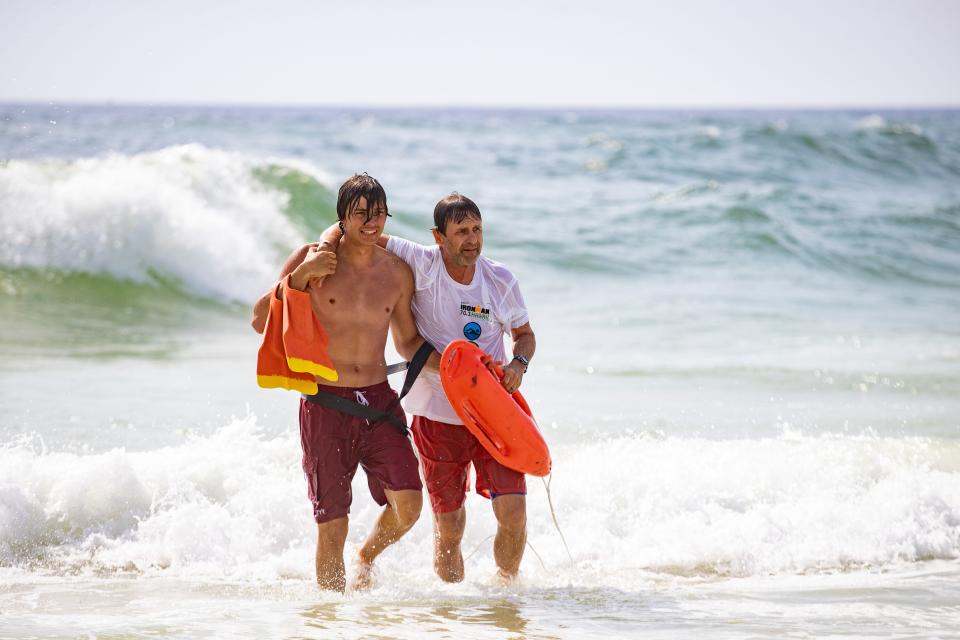Panama City Beach gearing up for spring break crowds following wave of drownings in 2023
Editor's note: The headlines on this story have been revised to reflect that the drownings happened in 2023.
PANAMA CITY BEACH − With spring break right around the corner, local officials are gearing up for the swarms of beachgoers who soon will flock to the Gulf Coast.
According to Daryl Paul, beach safety director for Panama City Beach Fire Rescue, the 2024 peak tourist season for Panama City Beach is something his department has been preparing for nonstop since last year. The season typically runs from about March to September.

"We started preparing the day our tourism season ended (last year)," Paul said. "We have not stopped. We have not taken breaks. We've almost kicked it into high-gear. We found a few things, a few areas about our operations that needed to be improved and needed to be addressed.
"We're pretty confident (that) we've made those adjustments."
Some of these adjustments include buying supplies in bulk so his department is never left shorthanded, as well as aiming to increase its collaboration efforts with organizations that oversee beach safety operations for Bay County.
PCB lifeguards also have been working to stay in great physical shape.
"We've been hitting the pool, we've been hitting our runs and we've been working on our policies and guidelines," Paul said. "We've been trying to hone the machine. (We've) been going back reviewing callings, trying to plan for trouble areas that we could probably focus on a little harder."
Nine beachgoers drowned in Bay County last year. Of the drownings, six happened off the coast of Panama City Beach, and three happened on unincorporated county beaches outside the city limits.
Two occurred under single red flags, while the seven others happened with double red flags overhead. All the victims were tourists who died after being caught in rip currents. It is illegal in Bay County to swim in double-red-flag conditions under penalty of a $500 fine.
"We were really struggling to gain compliance with the beach patrons," Paul said. "All of (the city's) drownings were people who entered the water when they shouldn't have. ... We definitely had a hard go last year, but hard lessons learned.
"We had to go back, sit down as a team and see what worked and what didn't work."
Though some tourists simply defy the orders to stay out of the water, there also are those who either do not know about the rules or are not aware of the dangers of rip currents.
Paul said that in the wake of the drownings last year, the United States Lifesaving Association, which sets the standards for open water life-saving operations, reached out to Panama City Beach to help. The organization has paid for electric signs throughout the city to educate beachgoers.
The best thing a swimmer can do if they're caught in a rip current is swim parallel to shore, meaning toward the left or right of where they are in distress. If they do this, they can break free from the current, often landing on a sandbar where they can stand. If they still cannot stand, they will at least be in calmer water where it will be easier to make it back to shore.
Rip currents are fast-moving currents created by deep channels in sandbars. The channels run perpendicular to the shoreline and cause water to funnel faster out into deeper waters. Rip currents can vary in strength, depending on how developed the channels are, and they can sometimes be identified from shore where there is a gap in the wave break − areas where the white caps of the breaks are less noticeable.
Common flag colors used in beach flag warning systems include a green flag for low hazard conditions, a yellow flag for medium hazard conditions, one red flag for high hazard conditions and two red flags for very dangerous conditions.
Panama City Beach and Bay County, however, never fly green flags because officials say beachgoers should always be cautious anytime they enter the Gulf. That's because rip currents can always be present, even under clear skies and calmer surf conditions.
Looking back: Protecting the coast: PCB lifeguards rescue 220, assist 2,300 so far this year
Despite the wave of local drownings in 2023, Panama City Beach Fire Rescue's beach safety division still logged almost 240 rescues, approximately 2,542 public assists, approximately 172,000 preventative actions and more than 1.109 million public contacts.
Assists are when a lifeguard entered the water to prevent a drowning. Preventative actions are when a lifeguard prevented someone from needing assistance. Public contacts are when lifeguards inform beachgoers on rip currents and the flag system.
Paul said his department has eight full-time lifeguards and is working to hire 15 seasonal lifeguards. More information on how to apply for the positions can be found by visiting www.pcbfl.gov.
This article originally appeared on The News Herald: After 2023 drownings, Panama City Beach preparing for spring crowds

